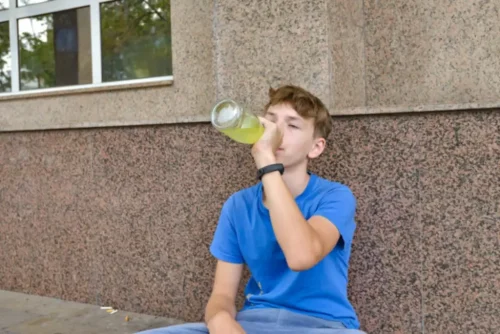
Anatomic and physiologic data suggest that a likely site for serotonergic modulation of dopaminergic transmission is through direct actions on mesolimbic and mesocortical dopaminergic transmission in the VTA (see Doherty and Pickel, 2000, and references therein). A variety of reports provide evidence for direct and indirect modulation of VTA dopaminergic neurons through activation of 5-HT2A receptors in this region. Cornea-Hébert et al. (1999) identified somatodendritic localization of 5-HT2A receptors in the VTA, and depolarization of dopamine cells in VTA slice preparations can be blocked by the 5-HT2A–selective antagonist ketanserin (Pessia et al., 1994). To invoke a mechanism of action for psychedelics that involves activation of serotonin 5-HT2A receptors, it is instructive to examine brain areas where that receptor is highly expressed. One would expect to find high receptor levels in key brain regions that are responsible for sensory processing and cognition. Nagai et al. (2007) studied the ability of a variety of psychoactive drugs to block reuptake of dopamine, 5-HT, and NE into rat brain synaptosomes.
What are the different types of psychedelics?
The value of the indifference point I50 was close to the geometric mean of the range of the light intensities (22 cd/m2). Midbrain raphe cells send serotonergic projections throughout the forebrain and are the source of serotonin afferents in the PFC (Moore et al., 1978). Raphe cells fire at a characteristic regular rate that is generally correlated with a mammalian organism’s are psychedelics addictive level of vigilance or attention. When the organism is awake, the cells fire at a characteristic slow regular rate; as the organism grows drowsy, the rate of firing slows. During the rapid eye movement (REM) sleep stage, raphe cell firing essentially stops completely. As a consequence of slowed raphe firing, serotonin release in projection areas declines or ceases.
Adverse effects of psychedelics
- Even so, understanding what they are, how and why they occur, and how they lead to therapeutic improvement should shed light on the underlying deficits in brain function that lead to these disorders in the first place.
- In the intestine, the lowest amount of drug (0.01 mg/kg) produced a maximal anti-inflammatory effect and nearly completely blocked the expression of all proinflammatory markers examined.
- Ketamine is an NMDA receptor antagonist and is thus classified as a non-classic psychedelic.
- Nor is this information, or any journalistic stories, anecdotes, visual or artistic material intended as a replacement or supplement for medical or legal advice.
- To directly test the effects of psychedelic therapy on neurotransmission and brain function in humans with addiction requires advanced multimodal neuroimaging techniques.
Once LSD was banned, most countries made other serotonergic psychedelics illegal as well (Nutt et al., 2013; Rucker et al., 2018). While short-term positive and negative mood changes are common with psychedelic and dissociative drugs, more research is needed to better understand the long-term effects these substances may have on mental health. [11C]Cimbi-36 is the first agonist radioligand suitable for the examination of cortical 5-HT2AR (171). As yet, these novel PET ligands have not been widely employed in translational psychopharmacology research and not at all in addiction. The opportunity presented by the development of such radioligands presents for the first time the ability to assess cortical serotonergic molecular biomarkers in addiction and the impact of psychedelic therapies on modulating any observable deficits.

Associated Data
Psychedelics (serotonergic hallucinogens) are powerful psychoactive substances that alter perception and mood and affect numerous cognitive processes. They are generally considered physiologically safe and do not lead to dependence or addiction. Their origin predates written history, and they were employed by early cultures in many sociocultural and ritual contexts. After the virtually contemporaneous discovery of (5R,8R)-(+)-lysergic acid-N,N-diethylamide (LSD)-25 and the identification of serotonin in the brain, early research focused intensively on the possibility that LSD and other psychedelics had a serotonergic basis for their action. Two small pilot studies of psilocybin-assisted psychotherapy also have shown positive benefit in treating both alcohol and nicotine addiction.
Similarly, the patients’ Beck Depression Inventory (BDI) scores showed an improvement of mood that reached significance at 6 months compared with baseline. After a long hiatus in clinical research, one of the most exciting and encouraging recent developments in this field has been the reintroduction of human treatment studies with psychedelics. Studies discussed in this section will be seen by the reader to reinforce the early belief that psychedelics might represent an important new treatment modality for a variety of disorders. The fact that these new and positive clinical findings had to be postponed for several decades dramatically illustrates the destructive capacity of politics to hinder potentially significant medical advances. In a later study, Schindler et al. (2012) reported that both the 5-HT2A and dopamine D1 receptors were required for rabbit head bob behavior. The 5-HT2 receptor family plays a crucial role in regulating the activity of amygdalar microcircuits and projections, modulating both excitatory and inhibitory neurons, in parallel to what is seen in the cerebral cortex.
Hallucinogen use disorder
However, in current-clamp recordings in acute rat PFC slices, Béïque et al. (2007) noticed a subpopulation of large neurons in deep layers that was highly sensitive to 5-HT and that responded with strong membrane depolarizations capable of initiating spiking activity. Thus, their results indicated that within the cortex, there is a subpopulation of 5-HT2A–expressing cells that when excited by a 5-HT2A agonist leads to increases in the frequency of sEPSCs in layer V pyramidal neurons. Finally, they note earlier work by Marek and Aghajanian (1998a), who showed that μ-opioid agonists abolished the ability of 5-HT to increase sEPSC activity and who also suggested that there was possibly a subcortical source for afferents on which 5-HT2 receptors could induce glutamate release.
- On the basis of this analysis, they developed a system using a head-mounted magnet and a magnetometer coil, followed by extensive validation using video analysis and an observer blind to the treatment.
- Food and Drug Administration would approve clinical studies employing ayahuasca because of the lack of control in its preparation and its variable alkaloid content.
- Attempts to train animals to self-administer hallucinogens, an animal model that can predict abuse liability, have generally been unsuccessful.
- Barnhill also emphasized that, like psychedelic compounds, too high a dose of cannabis can cause a “bad trip” of sorts—intense paranoia or agitation.
- Once LSD was banned, most countries made other serotonergic psychedelics illegal as well (Nutt et al., 2013; Rucker et al., 2018).
- Tagliazucchi et al. (2014) carried out a reanalysis of the previously published data from Carhart-Harris et al. (2012).
Emotional and social processing

All three types of α1 adrenergic receptors were observed to be present in pyramidal (vesicular glutamate transporter 1–positive) and GABAergic (GAD65/67–positive) neurons. Pyramidal neurons expressing α1A adrenergic receptors were more abundantly localized in deep layers V to VI in the three mPFC subdivisions. In GABAergic interneurons, 5-HT2A mRNA was expressed in 45%–69% of parvalbumin and 61%–87% of calbindin-positive cells.
Take action when the consequences of alcohol use disorder are easiest to reverse.
Mash pleaded for more evidence-based research that could lead to regulatory approval and make such treatments safely available to those who are “suffering the most.” So far, what researchers have is anecdotal. Accounts like Guckel’s and the idea that psychedelics might prompt a neurochemical reset in the brain have many looking to the approach as a promising treatment for addiction disorders. Around 17 percent of Americans https://ecosoberhouse.com/ have met criteria for a substance use disorder in the past year, said Stephanie Tabashneck, the event’s moderator. Dissolution of the sense of ego makes people feel at one with the world, and the intensity of the experience makes it highly meaningful to people. Not only is serotonin involved in processing sensory information, it also influences our emotional responses, such as fear, excitement, and empathy.
- Ray (2010) reported on receptor screening of 25 hallucinogens and analogs by the National Institute of Mental Health Psychoactive Drug Screening Program, with affinities of 10 additional drugs taken from the literature.
- These findings highlight increased hypothalamus and substantia nigra DRD3 in alcohol dependence and stimulant use disorder, respectively, and have led to the development of novel interventions such as the DRD3 antagonist.
- This time around, however, it is recognized that the presence of a trained and supportive therapist in a safe and comfortable environment is essential for obtaining the benefits of psychedelic agents.
- Using a refined process of cortical cell dissociation and sorting by flow cytometry, Nichols and Martin were able to identify, isolate, and separate highly purified individual cellular populations that included pyramidal neurons, the three subtypes of GABA interneurons, glial cells, and astrocytes.
- Radioligand binding studies in the first cohort found that chronic MDL11939 led to a significant 88% increase in receptor density with no change in Kd.
- Typically, they are consumed ritualistically in healing ceremonies and religious rites to facilitate communication with the gods, all under the guidance of experienced elders.
The 5-HT2A receptor is expressed in the thalamus, primarily in sensory and “nonspecific” nuclei (Cornea-Hébert et al., 1999). In the rat brain, significant levels of 5-HT2A receptor mRNA are expressed in the reticular nucleus, lateral geniculate nucleus, zona incerta, and the anterodorsal and ventromedial nucleus of the thalamus (Cyr et al., 2000). Pompeiano et al. (1994) also found 5-HT2A mRNA in the reticular nucleus, lateral geniculate, and zona incerta, but none in the midline or intralaminar nuclei. The thalamus, along with the amygdala, represents the major source of glutamate afferents innervating the neocortex.
